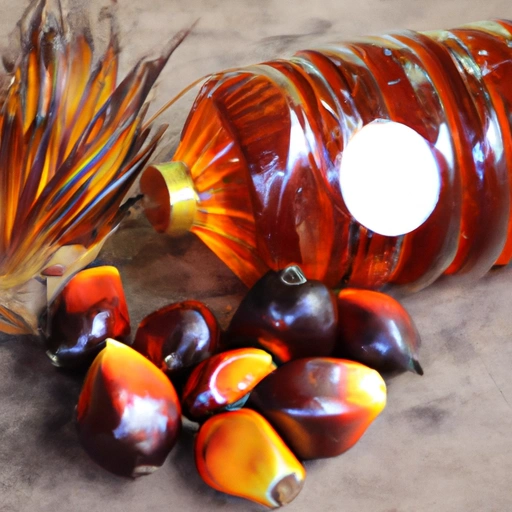Red Palm Oil
Description

Red palm oil is a vibrant, reddish-orange vegetable oil derived from the fruit of the oil palm tree (Elaeis guineensis). This oil is known for its rich color, which is due to high levels of carotenes, including beta-carotene and lycopene. Red palm oil has a bold, earthy flavor and a high smoke point, making it suitable for various cooking methods. It is widely used around the world and is acknowledged for its nutritional benefits.
Common uses
Red palm oil is commonly used for sautéing, frying, and flavoring dishes. It is a key component in African and Brazilian cuisine and is also utilized in the preparation of certain Asian dishes. Apart from culinary uses, red palm oil finds applications in the manufacturing of cosmetics, soaps, and as a natural food coloring agent.
Nutritional value
Calories
A tablespoon (about 14g or 0.5 oz) of red palm oil contains approximately 120 calories (502 kJ).
Protein
Red palm oil contains negligible amounts of protein.
Fat
This oil is high in fats, with 14g (about 0.5 oz) per tablespoon, consisting predominantly of saturated (7g) and unsaturated fats (7g), including beneficial monounsaturated and polyunsaturated fats.
Carbohydrates
Red palm oil does not contain carbohydrates.
Vitamins
It is rich in fat-soluble vitamins, particularly vitamin E (tocotrienols and tocopherols) and vitamin A precursors like beta-carotene, providing 15-30% of the daily value (DV) per tablespoon.
Minerals
Red palm oil contains trace amounts of minerals such as iron and potassium.
Health benefits
The high content of antioxidants and vitamins in red palm oil can offer various health benefits, including supporting eye health due to vitamin A, boosting immune function, and potentially reducing the risk of certain chronic diseases due to its antioxidant properties.
Potential risks
Despite its health benefits, red palm oil is high in saturated fat, which can contribute to cardiovascular disease if consumed in excess. The environmental impact of red palm oil production, particularly the deforestation associated with palm oil plantations, is also a concern.
Common recipes
Red palm oil is used in traditional African soups and stews, Brazilian moqueca, and as a cooking oil for frying plantains and other dishes. It can also be found in the preparation of Asian curries and rice dishes.
Cooking methods
It is suitable for frying, sautéing, and as a dressing for salads. Its high smoke point of about 232°C (450°F) makes it a stable oil for high-heat cooking.
Pairing with other ingredients
Red palm oil pairs well with robust flavors such as garlic, chili, and ginger. It complements the taste of leafy greens, rice, beans, and starchy vegetables like yams and plantains.
Summary
Overall, red palm oil is a versatile and nutritious ingredient with a rich culinary history. Its unique flavor and health benefits make it a valuable addition to a variety of dishes around the world. However, responsible sourcing due to environmental concerns and moderation in consumption due to its high saturated fat content are important considerations for consumers.